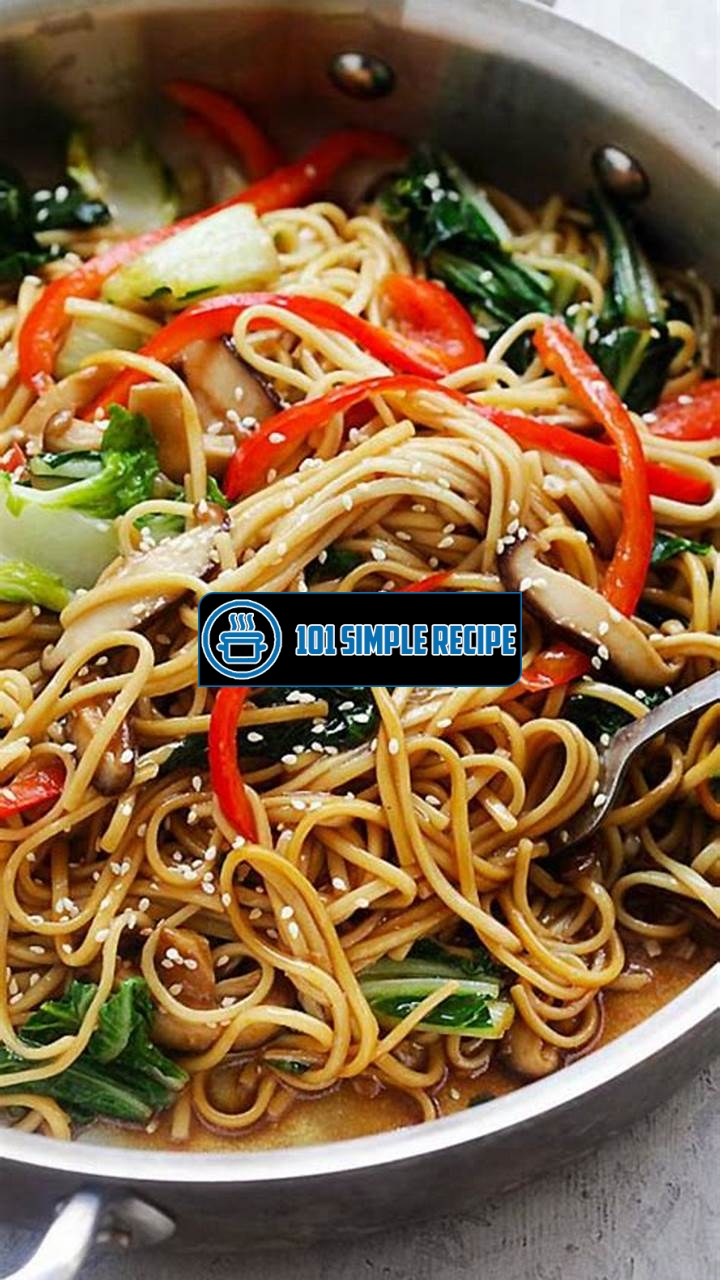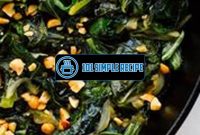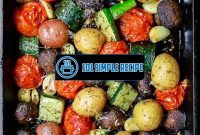Are Lo Mein Noodles Healthy? That is the question many people wonder when faced with the delicious and satisfying choice of this popular Chinese dish. Lo Mein noodles, made from wheat flour, are a staple in Chinese cuisine and have gained popularity worldwide. However, the health-conscious individual may hesitate before indulging in this tasty treat. So, let’s delve into the nutritional value of Lo Mein noodles and uncover whether they can be a healthy addition to your diet.

The Nutritional Profile of Lo Mein Noodles
When it comes to the nutritional profile of lo mein noodles, it is important to consider the key nutrients, calories, and potential health benefits associated with this popular dish. Lo mein noodles are a staple in many Asian cuisines, known for their versatility and delicious taste. While they can be a satisfying addition to your meal, it is essential to understand their nutritional composition to make informed dietary choices.
Macronutrients in Lo Mein Noodles
Lo mein noodles primarily consist of carbohydrates, which serve as the main source of energy for the body. These noodles are made from wheat flour, resulting in a higher carbohydrate content compared to other types of noodles. A single serving of lo mein noodles, approximately 1 cup, contains around 200 calories, with the majority coming from carbohydrates.
Carbohydrates
The carbohydrates in lo mein noodles are complex carbohydrates, which provide a steady release of energy and can help you feel full for longer periods. However, it is important to consume them in moderation, especially if you are watching your carbohydrate intake.
Protein
Lo mein noodles also contain a small amount of protein, although it is not the primary macronutrient in the dish. Adding protein-rich ingredients such as chicken, beef, or tofu to your lo mein can help increase its protein content and provide a more balanced meal.
Fat
While lo mein noodles are not particularly high in fat, the way they are prepared can significantly impact their fat content. It is common for lo mein noodles to be stir-fried with oil and other ingredients, which can increase the overall fat content of the dish. Opting for healthier cooking methods, such as steaming or lightly sautéing, can help reduce the fat content.
Vitamins and Minerals in Lo Mein Noodles
Lo mein noodles also offer some essential vitamins and minerals that contribute to a well-rounded diet.
Vitamins
These noodles contain various B vitamins, including thiamin, riboflavin, and niacin. B vitamins play a vital role in energy production, metabolism, and maintaining a healthy nervous system. Additionally, they provide a small amount of vitamin E, which functions as an antioxidant in the body.
Minerals
Lo mein noodles contain minerals such as iron, magnesium, and phosphorus. Iron is essential for red blood cell production, while magnesium and phosphorus are involved in numerous physiological functions, including bone health and muscle function.
The Health Benefits of Lo Mein Noodles
Despite their carb-heavy nature, lo mein noodles can still offer some health benefits when consumed as part of a balanced diet.
Source of Energy
The carbohydrates in lo mein noodles provide readily available energy for your body and brain. They can be especially beneficial for those leading an active lifestyle or engaging in high-intensity physical activities.
Dietary Fiber
While lo mein noodles are not a significant source of dietary fiber, they can still contribute to your overall fiber intake. Fiber aids digestion, helps regulate blood sugar levels, and promotes feelings of fullness.
Versatility
Lo mein noodles can be paired with an array of vegetables, proteins, and sauces, allowing you to incorporate a variety of nutrients into your meal. By adding colorful vegetables or lean proteins, you can enhance the nutritional value of your dish.
In conclusion, lo mein noodles provide a substantial amount of carbohydrates, contribute essential vitamins and minerals, and can be a part of a healthy diet when consumed in moderation and complemented with nutrient-rich ingredients. Incorporating lo mein noodles into your meals allows you to enjoy a delicious dish while still nourishing your body.
The Impact of Cooking Methods on Nutrition
When it comes to preparing lo mein noodles, the cooking method you choose can have a significant impact on their nutritional value. Different cooking techniques can alter the nutrient composition of the noodles, affecting their overall healthiness. In this section, we will explore the two primary cooking methods for lo mein noodles: boiling and stir-frying.
Boiling vs. Stir-frying
Boiling lo mein noodles involves cooking them in a pot of water until they become tender. This method is generally considered a healthier option as it requires less oil and fat compared to stir-frying. Boiling helps retain the nutrients in the noodles, ensuring that they remain intact during the cooking process.
On the other hand, stir-frying involves cooking the noodles in a hot pan with oil and various ingredients. While stir-frying can create a deliciously flavored dish, it often requires a significant amount of oil, which can increase the calorie and fat content of the noodles. Additionally, the high heat involved in stir-frying can lead to the loss of some heat-sensitive nutrients.
Therefore, if you are looking for a healthier cooking method for your lo mein noodles, boiling is the way to go. It allows you to enjoy the noodles while preserving their nutritional value.
The Influence of Sauces and Seasonings
When it comes to lo mein noodles, the type and amount of sauces and seasonings used can greatly impact their overall healthiness. Some sauces and seasonings can be high in sodium, added sugars, and unhealthy fats, which can detract from the nutritional value of the dish.
Opting for lighter sauce options, such as low-sodium soy sauce or homemade sauce with minimal additives, can help reduce the overall sodium content. Additionally, adding a variety of colorful vegetables as seasonings can increase the nutrient density of the dish, providing essential vitamins and minerals.
It’s essential to pay attention to the ingredients used in sauces and seasonings when preparing lo mein noodles to ensure that they remain a healthy choice.
Best Cooking Techniques for Maximum Nutrition
To maximize the nutritional value of your lo mein noodles, here are a few cooking techniques you can employ:
- Include a variety of vegetables: Adding a colorful assortment of vegetables to your lo mein noodles can significantly enhance their nutritional content. Vegetables like bell peppers, broccoli, carrots, and mushrooms are packed with vitamins, minerals, and fiber.
- Use lean protein sources: Incorporating lean protein sources such as skinless chicken breast, shrimp, or tofu can provide a healthy dose of protein without adding excessive calories or unhealthy fats.
- Control portion sizes: While lo mein noodles can be a tasty and nutritious option, it’s essential to maintain appropriate portion sizes. Consuming large portions can lead to excessive calorie intake and potential weight gain.
- Limit the use of high-fat oils: When cooking your lo mein noodles, opt for healthier cooking oils such as olive oil or coconut oil. Avoid using excessive amounts of high-fat oils like vegetable oil or palm oil, which can contribute to unhealthy fat consumption.
By employing these cooking techniques, you can ensure that your lo mein noodles are not only flavorful but also nutritious.
In conclusion, the cooking methods and choices of sauces and seasonings you make can determine the overall healthiness of lo mein noodles. By opting for healthier cooking methods such as boiling, using lighter sauces, and incorporating nutritious ingredients, you can enjoy a delicious and nutritious meal. So, next time you prepare lo mein noodles, remember to choose the cooking techniques that promote maximum nutrition.
Considerations for Healthy Lo Mein Noodles
When it comes to deciding whether lo mein noodles are a healthy choice, there are several factors to consider. From the type of noodles you choose to the portion sizes and added ingredients, each aspect plays a role in determining the overall healthiness of this popular dish. Let’s explore these considerations in detail.
Choosing Whole Grain or Egg Noodles
The type of noodles you opt for can significantly impact the nutritional value of your lo mein. Whole grain noodles are an excellent choice as they are high in fiber, which aids digestion and helps regulate blood sugar levels. Additionally, they contain important nutrients such as B vitamins and minerals. On the other hand, egg noodles are typically made from refined flour and have a lower nutritional value compared to whole grain noodles. While they may be tasty, they lack the fiber and nutrients found in whole grains. Hence, opting for whole grain noodles is a healthier choice.
Portion Control and Lo Mein Noodles
Portion control is crucial when it comes to enjoying lo mein noodles without compromising your health. While it may be tempting to indulge in a large plate of noodles, it’s important to keep your serving size in check. One way to do this is by pairing your noodles with a generous portion of vegetables and lean proteins. This not only adds nutritional value to your meal but also helps create a balanced plate. Remember, moderation is key when it comes to consuming any type of food, including lo mein noodles.
Weighing the Impact of Added Ingredients
The additional ingredients that are commonly used in lo mein can also influence its overall healthiness. For example, if the dish contains a lot of sodium-rich sauces, such as soy sauce or oyster sauce, it can increase your sodium intake and potentially lead to higher blood pressure. To make a healthier version of lo mein, opt for lower-sodium sauce options or even make your own using fresh ingredients. Additionally, be mindful of the amount of oil used during the cooking process, as excessive oil can increase the calorie content of the dish. Choosing lean proteins, such as chicken, shrimp, or tofu, instead of fatty meats also contributes to a healthier lo mein dish.
By considering these factors, you can make informed decisions about whether lo mein noodles can fit into your healthy eating plan. Remember to choose whole grain noodles, practice portion control, and be mindful of the added ingredients. With these considerations in mind, you can enjoy a delicious and healthier version of this beloved Chinese dish!
Learn more about making healthy choices with our weight loss recipes.
Health Concerns and Lo Mein Noodles
When it comes to the topic of health and nutrition, it’s important to consider the potential health concerns associated with consuming lo mein noodles. While these noodles are a popular choice for many Asian dishes, it’s crucial to understand the possible drawbacks they may pose to your overall health. In this article, we will discuss three main concerns: sodium content, added sugar, and the potential effects of high-glycemic index carbohydrates.
Sodium and Lo Mein Noodles
One of the primary concerns when it comes to lo mein noodles is their sodium content. These noodles are often cooked and prepared with sauces that contain a high amount of sodium, such as soy sauce. Excessive sodium intake can lead to various health issues, including high blood pressure, heart disease, and kidney problems.
It is recommended that individuals limit their daily sodium intake to no more than 2,300 milligrams per day. However, a single serving of lo mein noodles can contain a significant portion of that amount. This is especially important for individuals with pre-existing health conditions, such as hypertension, who should be particularly cautious about their sodium consumption.
The Issue of Added Sugar
Another concern to be aware of is the potential presence of added sugar in lo mein noodles. While noodles themselves may not naturally contain sugar, certain sauces used in their preparation can add significant amounts of sugar to the dish. Consuming excessive added sugar can contribute to obesity, diabetes, and other health problems.
It’s essential to read labels and choose sauces with minimal added sugars when preparing or ordering lo mein noodles. Opting for low-sugar alternatives can help to mitigate these concerns and keep your overall sugar intake in check.
Potential Effects of High-Glycemic Index Carbohydrates
Finally, lo mein noodles are typically made from refined wheat flour, which can result in a high-glycemic index. Foods with a high-glycemic index can cause a rapid spike in blood sugar levels, followed by a crash, leading to feelings of fatigue and hunger shortly after consumption.
Individuals who are managing their blood sugar levels, such as those with diabetes, should be particularly cautious when it comes to consuming high-glycemic index carbohydrates like lo mein noodles. Choosing whole grain alternatives or incorporating more fiber-rich ingredients into the dish can help to mitigate these effects and provide a slower, more sustained release of energy.
Although lo mein noodles can be a tasty addition to your meals, it’s important to be aware of the potential health concerns associated with their consumption. By being mindful of your sodium intake, choosing sauces with minimal added sugars, and considering alternatives for high-glycemic index carbohydrates, you can enjoy lo mein noodles in a balanced and health-conscious way. Remember, moderation and informed choices are key when it comes to maintaining a healthy diet.
Discover the secret to a great teriyaki sauce with our beef teriyaki recipe.
Incorporating Lo Mein Noodles into a Balanced Diet
When it comes to maintaining a healthy eating plan, it’s important to consider the nutritional value of the foods you consume. Lo mein noodles, a popular dish in Chinese cuisine, can be enjoyed as part of a balanced diet when prepared and paired with the right ingredients. By following a few strategies and exploring different recipes, you can incorporate lo mein noodles into your meals and enjoy their delicious taste while staying on track with your health goals.
Pairing Lo Mein Noodles with Nutrient-rich Ingredients
One way to make lo mein noodles a healthier option is to pair them with nutrient-rich ingredients. Incorporating vegetables such as broccoli, bell peppers, carrots, and leafy greens not only adds vibrant colors to your dish but also increases its nutritional value. These vegetables are packed with essential vitamins, minerals, and fiber, making your lo mein noodles more wholesome.
Additionally, adding lean proteins like chicken, shrimp, or tofu can enhance the nutritional profile of your meal. These protein sources provide essential amino acids and can help you feel satiated for longer periods, reducing the temptation to snack on unhealthy foods throughout the day.
Alternative Noodle Options for Health-conscious Individuals
If you’re looking for alternative noodle options to cater to your health-conscious preferences, there are various choices available. Opting for whole wheat or brown rice noodles instead of traditional lo mein noodles can significantly increase the fiber content of your meal. Fiber aids in digestion and can contribute to a feeling of fullness, preventing overeating.
Another alternative to consider is using zucchini or other spiralized vegetables as a noodle substitute. These low-carb options not only reduce the calorie count of your meal but also increase your intake of vitamins and minerals. Spiralized vegetables add a refreshing crunch and can be easily incorporated into your favorite lo mein recipes.
Delicious and Nutritious Lo Mein Recipes
Here are a couple of recipes that demonstrate how you can enjoy delicious and nutritious lo mein noodles as part of your balanced diet:
- Vegetable Lo Mein: Sauté a variety of colorful vegetables such as broccoli, bell peppers, and carrots in a pan with a small amount of olive oil. Add cooked lo mein noodles and a flavorful sauce made from low-sodium soy sauce, garlic, and ginger. Toss everything together until well combined and serve hot.
- Chicken and Mushroom Lo Mein: Cook sliced chicken breast and mushrooms in a separate pan until tender. In another pot, boil lo mein noodles according to package instructions. Once cooked, drain and combine the noodles with the chicken and mushrooms. Drizzle a light sauce made from reduced-sodium soy sauce, sesame oil, and a dash of chili flakes. Mix well and enjoy!
These recipes offer a healthy twist on traditional lo mein noodles by incorporating nutrient-rich ingredients and reducing unhealthy additives.
Incorporating lo mein noodles into a balanced diet doesn’t have to be a challenge. By following these strategies, experimenting with different ingredients, and trying out new recipes, you can enjoy this delicious dish while nourishing your body with essential nutrients. Remember to make mindful choices and opt for nutrient-rich ingredients to create a wholesome meal that suits your taste buds and supports your overall health.
Looking for more delicious noodle recipes? Check out our buttered noodles recipe.
Frequently Asked Questions
Here are some frequently asked questions about the healthiness of lo mein noodles:
| No. | Questions | Answers |
|---|---|---|
| 1. | Are lo mein noodles a healthy option? | While delicious, lo mein noodles are not the healthiest option. They are typically high in carbohydrates and sodium. However, you can make healthier choices by opting for whole wheat or vegetable-based noodles, and adding plenty of fresh vegetables and lean protein to your dish. Moderation is key! |
| 2. | Can I make lo mein noodles healthier by using different sauces? | Absolutely! Traditional lo mein sauces can be loaded with sodium and sugar. You can make your dish healthier by opting for lower-sodium sauces or even making your own using healthy ingredients like reduced-sodium soy sauce, fresh ginger, garlic, and a touch of honey. |
| 3. | Can I include more vegetables in my lo mein noodles? | Definitely! Adding a variety of colorful vegetables like broccoli, bell peppers, carrots, and mushrooms to your lo mein noodles can not only enhance the nutritional value but also provide more vitamins, minerals, and fiber to your meal. |
| 4. | Are there healthier alternatives to traditional lo mein noodles? | Yes, there are! If you’re looking for a healthier alternative, you can try using zucchini noodles (zoodles) or spaghetti squash instead of traditional wheat-based lo mein noodles. These options are lower in carbs and calories while providing additional nutrients. |
| 5. | Can I make lo mein noodles a balanced meal? | Absolutely! To make your lo mein noodles a balanced meal, make sure to include a good source of protein like tofu, shrimp, or chicken, along with plenty of colorful vegetables. This combination will provide a good balance of macronutrients and micronutrients. |
| 6. | Is it okay to enjoy lo mein noodles occasionally? | Yes, it’s absolutely fine to enjoy lo mein noodles occasionally as part of a balanced diet. Just remember to practice portion control and balance it out with other nutritious foods throughout the day. |
Thanks for Reading! Visit Again Soon!
We hope this article has provided you with valuable insights into the healthiness of lo mein noodles. Remember, while they might not be the healthiest option, you can make smarter choices and enjoy them in moderation. Don’t forget to check out our other articles on healthy eating and cooking tips. Feel free to visit our website again for more informative content. Stay healthy and happy!
Jump to Recipe
Are Lo Mein Noodles Healthy

Discover the healthiness of lo mein noodles and learn how to make smarter choices for a balanced meal.
- 8 oz lo mein noodles
- 2 tbsp vegetable oil
- 4 cloves garlic (minced)
- 1 cup mixed vegetables (broccoli, bell peppers, carrots)
- 8 oz chicken breast (sliced)
- 3 tbsp soy sauce
- 1 tbsp oyster sauce
- 1/2 tsp sesame oil
- 1/4 tsp black pepper
- Cook the lo mein noodles according to package instructions. Drain and set aside.
- In a large skillet, heat vegetable oil over medium heat. Add minced garlic and sauté until fragrant.
- Add the sliced chicken breast to the skillet and cook until no longer pink. Remove from skillet and set aside.
- In the same skillet, add the mixed vegetables and sauté until tender-crisp.
- Return the cooked chicken to the skillet with the vegetables.
- In a small bowl, whisk together soy sauce, oyster sauce, sesame oil, and black pepper.
- Pour the sauce over the chicken and vegetables in the skillet. Stir well to combine.
- Add the cooked lo mein noodles to the skillet. Toss until well coated with the sauce and heated through.
- Serve hot and enjoy!






